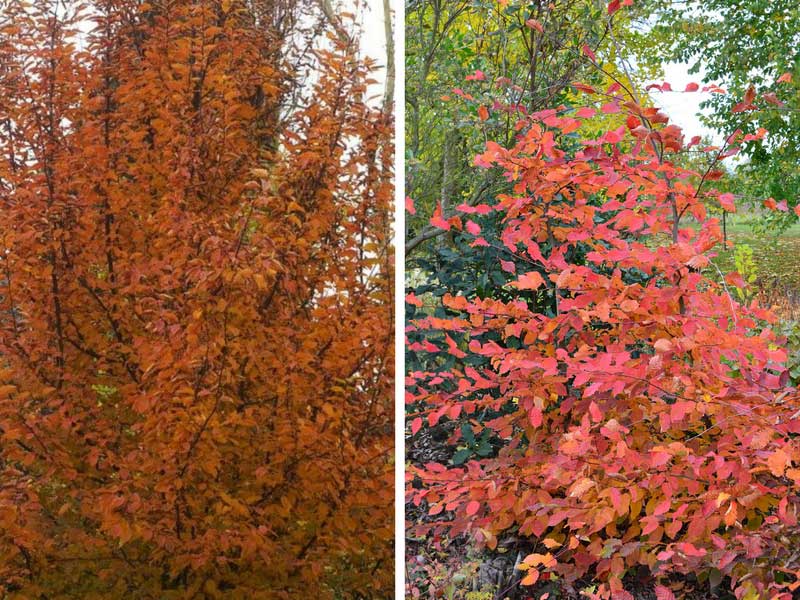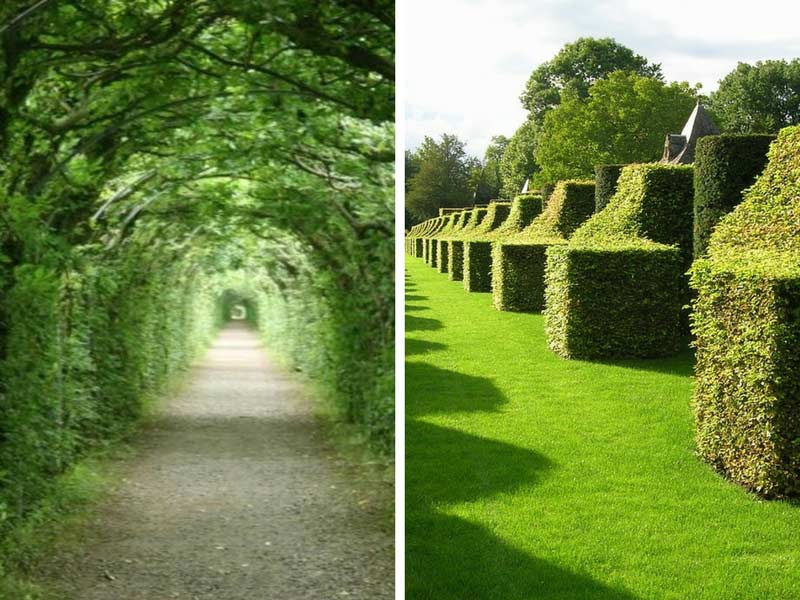
The common Charm, Carpinus betulus from its sweet Latin name, is a tree that is said to be very widespread but which, in my opinion, is not sufficiently planted. In vain I scrutinize the hedges and gardens in my neighborhood: neither charm nor bower. So, yes, I am indignant because it is a tree that offers many qualities!
As a preamble, let’s start with a quick presentation: the common Charm belongs, like birch, alder and hazel, to the Betulaceae family. It is recognized by its pale gray bark which cracks with age. It bears elliptical, green, toothed leaves with prominent veins. Planted as a hedge, it is commonly called “Charmille”. It is a tree quite close to the Beech … but you will easily differentiate it by remembering this little sentence: “Adam’s charm is to be naked” or the toothed charm and the beech tree, speaking of their leaves … I’m sure you will remember them 😉
Originally from Europe and Asia Minor, it is indigenous and considered, in France, as commonplace. Is that why we make the mistake of not being interested in it?
To remedy this, here are 5 good reasons to invite it to the garden.
Why plant the charm in the garden?
1) The charm is a good neighbor and is satisfied with little
The charm knows how to live in society, because its requirements are weak. In the forest, it grows carefree in the shade of tall oak trees. In the garden, it is the same: he is a good neighbor who asks for nothing more than deep soil, rather cool and not too acidic. It does not require a lot of light and lives perfectly well in the shade, part shade without being allergic to the sun, as long as it is not too scorching.
2) The charm is charming, all the time
Not really obsolete, not quite persistent, the charm is marcescent and that is all its poetry! In fact, in the fall, its leaves turn a pretty amber color to finish in a tobacco hue, but they do not fall, they hang on until the new ones appear.
Some find it sad in winter. For my part, I love her romantic sleep, sleeping beauty, as much as her spring awakening. And it is always with great pleasure that I observe, in spring, the breaking of its buds, which give birth to pretty soft green leaves, folded like origami.

3) The charm can do everything
And yes, the Charm can do everything! Planted in isolation and left free to express itself fully, it easily reaches 15 meters and becomes a tree, with a slender port if you opt for the fastigiata variety (Carpinus betulus fastigiata). On the color side, ‘Orange Retz’ offers flamboyant foliage in the fall that lights up the garden.
But it can also constitute monospecific hedges or “bowers” of unparalleled chic. And you will decide the height and thickness. As a low hedge, it organizes the space or emphasizes without obscuring. Higher, it acts as a screen, windbreak or sunshade … It is ideal for forming traditional green rooms but matches all styles of gardens, from the most modern to the classic. It constitutes a neutral and uniform solid base which highlights perennials and grasses very well, whether your garden is of naturalistic inspiration, very English or even Japanese.
For green gardeners, of which I am a part … this is a must for bocage, free and natural hedges. It cohabits there with the oak, the chestnut tree, the country maple while welcoming the auxiliaries, so useful in the garden.
Finally, it seems that it is an excellent firewood … but, who, except if it made up a wooded space intended for this use, would be crazy enough to cut it down for heat?

4) The charm supports pruning well, it is obedient and malleable
Planted tightly, in a hedge, the Charm does not grow too quickly or too slowly. It is not a chronic shaggy that forces you to spend the summer sheared by hand, but it forms, in two or three years, a completely satisfactory screen to preserve your privacy in the garden. Malleable, it supports the size and can be molded as you see fit. You can thus establish narrow and regular lines or give free rein to your imagination and create soft undulations, very in vogue today, to spare passages or even charming oculus. And even, if you like large-scale projects, why not build a small labyrinth in the “French garden” style (as in Villandry) or a charming green tunnel. It can also be done as a curtain or in large topiaries.

5) The lasting and disease resistant charm
The Charm is a durable tree with a life expectancy of around 100, 150 years, it is very resistant to disease. It can, very occasionally, suffer from chlorosis or from a mite, Aculops macrotrichus, but this is anecdotal compared to the fate of other trees, almost doomed before they are planted. Besides, where do you think the expression “to wear like a charm” comes from?
